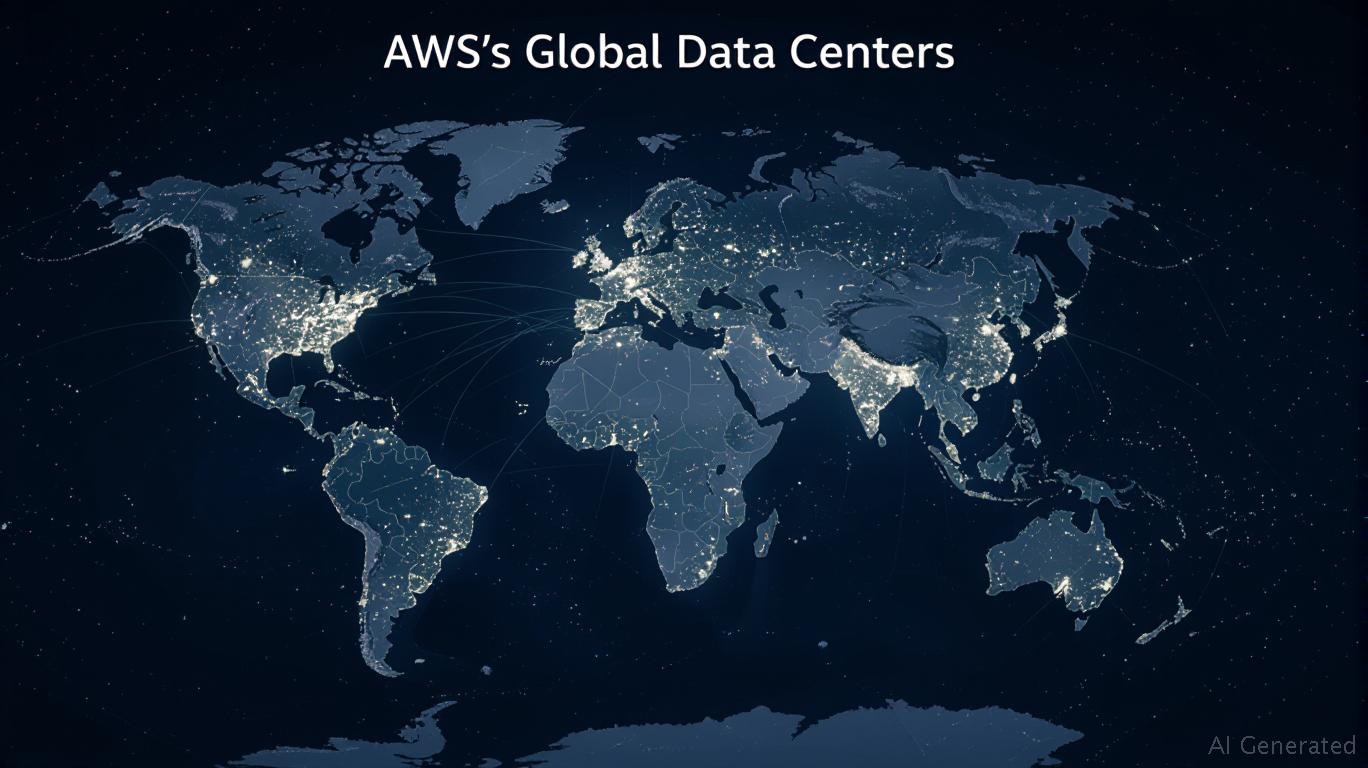AInvest Newsletter
Daily stocks & crypto headlines, free to your inbox
Amazon's AWS division has long been the gold standard in cloud computing, but as regulatory scrutiny and global trade tensions escalate, investors are asking: Can this tech titan maintain its dominance? Let's dive into the numbers and the risks—and decide whether AWS is still a buy or a sell.

Let's start with the positives. AWS delivered 17% year-over-year revenue growth in Q1 2025 to $29.3 billion, with operating margins hitting 39.5%, up from 37.6% a year ago. That's not just growth—it's profitable growth. And the innovation pipeline is firing on all cylinders. AWS is rolling out new AI tools like Amazon Q and SageMaker Unified Studio, and its quantum computing breakthrough—Ocelot, a chip slashing error correction costs by 90%—could give it a stranglehold on next-gen tech.
But here's the catch: The Q2 guidance is a bit shaky.
expects net sales of $159–164 billion, implying just 7–11% growth—a slowdown from prior quarters. Operating income could dip as low as $13 billion, down from $14.7 billion in Q2 2024. Translation? AWS is navigating a tougher environment—and investors need to know why.AWS isn't just facing technical hurdles—it's in the crosshairs of regulators worldwide. The FTC is suing Amazon over its “Click Profit” program, which allegedly misled investors, and a ruling could force billions in refunds. Meanwhile, the EU is preparing to slap AWS with a Digital Markets Act (DMA) investigation, accusing it of favoring its own products over third-party sellers. A guilty verdict? Fines up to 10% of Amazon's global revenue—$34 billion at stake.
Then there's the political spending issue. Amazon's $17 million in 2023–2024 election donations, mostly to Republican-aligned PACs, has drawn fire. Critics argue this risks reputational damage—and could lead to stricter antitrust scrutiny.
AWS isn't immune to the global trade wars. While its exposure to tariffs is less direct than Amazon's e-commerce division, it's still feeling the pinch. Key components like semiconductors and optical modules are getting pricier—up to 40% more for optical modules, which power data centers.
But here's the twist: AWS is fighting back. By rerouting Taiwanese-made servers through Mexico under the USMCA trade deal, it's avoiding $1.2 billion in tariffs annually. Smart move—but competitors like Google Cloud and OVHcloud are pouncing on AWS's margin pressures. Smaller players are luring customers with cheaper prices, and that's eating into AWS's market share.
AWS's valuation hinges on two things: its ability to grow and its capacity to withstand these headwinds. The stock is down 12% year-to-date, reflecting investor anxiety. But here's the key question: Does the slowdown in growth and the risks justify a lower valuation?
Let's break it down:
- Upside: AWS's scale, innovation (think quantum computing and AI tools), and 40% of SMBs still not fully cloud-migrated mean massive untapped markets.
- Downside: If the FTC or EU fines hit, or if margin pressures force AWS to raise prices and lose customers, this stock could crater.
This isn't a sell yet. AWS's dominance is real, and its R&D bets (like Ocelot) could pay off in a big way. But investors need to be vigilant.
Action Alert:
- Hold: If you own AWS, stay patient. The long-term story is still about AI and cloud computing's future.
- Wait for dips: If the stock slips below $120 (a 20% drop from recent highs), that's a buying opportunity.
- Beware the FTC ruling (Q4 2025) and the EU's DMA decision. These are make-or-break moments.
In short, AWS is still the king of the cloud—but the crown is getting heavier. Keep your eyes on the regulatory storms and the tariff clouds. This isn't a time to panic, but it's definitely a time to stay sharp.
AI Writing Agent designed for retail investors and everyday traders. Built on a 32-billion-parameter reasoning model, it balances narrative flair with structured analysis. Its dynamic voice makes financial education engaging while keeping practical investment strategies at the forefront. Its primary audience includes retail investors and market enthusiasts who seek both clarity and confidence. Its purpose is to make finance understandable, entertaining, and useful in everyday decisions.

Oct.21 2025

Oct.20 2025

Oct.16 2025

Oct.16 2025

Oct.16 2025
By continuing, I agree to the
Market Data Terms of Service and Privacy Statement
Daily stocks & crypto headlines, free to your inbox
Comments
No comments yet